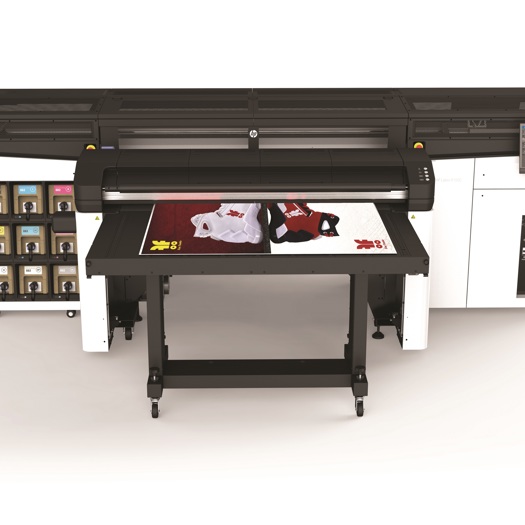The new sub £30,000 eight-colour series consists of four models in two flavours: the 700 and 700W and the 800 and 800W, with the W denoting white printing capabilities.
Speaking at the embargoed online launch event last week, Guayente Sanmartin, global head and general manager of HP’s Large Format Printing division said that the new machines were developed to help customers “win big” in the next normal.
“As with any challenge there are always opportunities,” she summised.
She highlighted how the wide-format businesses that had fared best were those that had a strong online presence and/or were able to add new revenue streams by pivoting into new areas and applications.
She said that the trend would roll on as the sector returned to growth “but it is true that the mix of applications that are going to be growing are going to be different from those that we were planning before the pandemic.”
To this end, the new 700/800 series was developed to not only increase productivity in the 1.6m wide category, but also expand its addressable applications.
The new machines feature new, user replaceable printheads that have 50% more nozzles than those on the current 1.6m-wide Latexes.

The new head (bottom) with a head from the 570
Both models also feature a new CMYK plus lights inkset with heavier pigment load based on the inks from the Latex R flatbeds, which HP said offers more vibrant colours and lower curing temperature for wider applications. It also heralded machines offered “the whitest white ink available” compared to rival solvent and UV machines in the sub $50,000 (£36,000) bracket.
“With the white ink we believe we have the best solution on the market,” said Maria Torres, global latex product manager, Large format Printing, who added that it was also the easiest system for users, thanks to its automatic recirculation and maintenance.
While the 700 and 800 share many of the same features, they differ in terms of the 800 machines featuring larger ink capacity and faster curing thanks to its longer curing module.
In terms of speeds, this translates to the slightly slower 700 machines offering up to 31sqm/hr in four-pass (4P) banner mode and 21sqm/hr in six-pass (6P) indoor mode. While the faster 800 machines are capable of 25sqm/hr (6P) and up to 36sqm/hr (4P), compared to the 28sqm/hr (6P) and 23sqm/hr (4P) of the Latex 570 machine the new series will ultimately replace.
As part of the manufacturer’s sustainability goals, the three litre and one litre ink containers on the 800 and 700s respectively use cardboard carriers which remove 80% of the plastic previously required. In fact 20% of the plastic used to manufacture the printer is recycled plastic.
Other tweaks include the introduction of a raisable curing module to enable easier roll changes and maintenance access, a lower curing temperature for heat sensitive media and better PrintOS integration.
“In this moment of market conditions customers are really looking for new avenues of growth, new opportunities to differentiate themselves and this new technology, we strongly believe, gives them the tools to do more,” Sanmartin stated.
Prices for the new machines start at £22,900 for the HP Latex 700 through to £29,900 for the top-of-the-range 800W.
Simultaneous to the launch of the new 700/800 series, HP also unveiled a revamped print and cut bundle offering with Latex Print and Cut Plus which features updated RIPs, new contour cutters and improved cutting accuracy thanks to an enhanced Optical Position System.
The cutting force has also been boosted to 600g on the 64 and 54 Plus cutters, up from the standard 400g.
Finally, the manufacturer has also expanded the models in its PageWide XL large format printer/scanners which are targeted at AEC applications.










